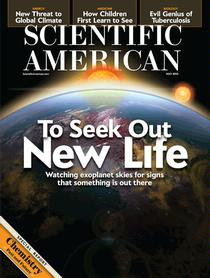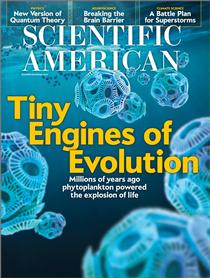Why great scientists make great mistakes
“Alien abductors have asked him to probe them.” “Sasquatch has taken a photograph of him.” The “him” is the “Most Interesting Man in the World,” the faux character in the Dos Equis beer ad campaign, and these are my favorite skeptical lines from a litany of superfluities and braggadocios. (“In a past life, he was himself.”)
My candidate for the most interesting scientist in history I’d like to have a beer with is Alfred Russel Wallace, the 19th-century naturalist and co-discoverer (with Charles Darwin) of natural selection, whose death centennial we will marking this November. As I document in my 2002 biography of him— In Darwin’s Shadow (Oxford University Press)—Wallace was a grand synthesizer of biological data into a few core principles that revolutionized biogeography, zoology and evolutionary theory. He spent four years exploring the Amazon rain forest but lost most of his collections when his ship sank on his way home. His discovery of natural selection came during an eight-year expedition to the Malay Archipelago, where during a malaria-induced fever, it struck him that the best fit organisms are more likely to survive and reproduce.
Being open-minded enough to make great discoveries, however, can often lead scientists to make great blunders. Wallace, for example, was also a firm believer in phrenology, spiritualism and psychic phenomena, evidence for which he collected at séances over the objections of his more skeptical colleagues. Among them was Thomas Henry Huxley, who growled, “Better live a crossing-sweeper than die and be made to talk twaddle by a ‘medium’ hired at a guinea a séance.” (continue reading…)
read or write comments (15)
Why terror doesn’t work
Because terrorism educes such strong emotions, it has led to at least five myths. The first began in September 2001, when President George W. Bush announced that “we will rid the world of the evildoers” and that they hate us for “our freedoms.” This sentiment embodies what Florida State University psychologist Roy Baumeister calls “the myth of pure evil,” which holds that perpetrators commit pointless violence for no rational reason.
This idea is busted through the scientific study of aggression, of which psychologists have identified four types that are employed toward a purposeful end (from the perpetrators’ perspective): instrumental violence, such as plunder, conquest and the elimination of rivals; revenge, such as vendettas against adversaries or self-help justice; dominance and recognition, such as competition for status and women, particularly among young males; and ideology, such as religious beliefs or utopian creeds. Terrorists are motivated by a mixture of all four. (continue reading…)
read or write comments (19)
Arguments of divine intervention—alien or otherwise—start with ignorance
According to the popular series Ancient Aliens, on H2 (a spinoff of the History channel), extraterrestrial intelligences visited Earth in the distant past, as evidenced by numerous archaeological artifacts whose scientific explanations prove unsatisfactory for alien enthusiasts. The series is the latest in a genre launched in 1968 by Erich von Däniken, whose book Chariots of the Gods? became an international best seller. It spawned several sequels, including Gods from Outer Space, The Gods Were Astronauts and, just in time for the December 21, 2012, doomsday palooza, Twilight of the Gods: The Mayan Calendar and the Return of the Extraterrestrials (the ones who failed to materialize).
Ancient aliens theory is grounded in a logical fallacy called argumentum ad ignorantiam, or “argument from ignorance.” The illogical reasoning goes like this: if there is no satisfactory terrestrial explanation for, say, the Nazca lines of Peru, the Easter Island statues or the Egyptian pyramids, then the theory that they were built by aliens from outer space must be true. (continue reading…)
read or write comments (12)
When neuroscience meets criminology
IN HIS BEST-SELLING ESSAY entitled “Guns,” Stephen King contrasts a mass killer’s school yearbook picture, “in which the guy pretty much looks like anybody,” and the police mug shot of someone who looks “like your worst nightmare.”
Do criminals look different from noncriminals? Are there patterns that science can discover to enable society to identify potential felons before they break the law or to rehabilitate them after? University of Pennsylvania criminologist and psychiatrist Adrian Raine attempts to answer these and related questions his book The Anatomy of Violence: The Biological Roots of Crime (Pantheon, 2013). Raine details how evolutionary psychology and neuroscience are converging in this effort. For example, he contrasts two cases that show new ways to look at the origins of wrongdoing. First is the example of “Mr. Oft,” a perfectly normal man turned into a pedophile by a massive tumor at the base of his orbitofrontal cortex; when it was resected, he returned to normalcy. Second, we learn of a murderer-rapist named Donta Page, whose childhood was so horrifically bad—he was impoverished, malnourished, fatherless, abused, raped and beaten on the head to the point of being hospitalized several times—that his brain scan “showed clear evidence of reduced functioning in the medial and orbital regions of the prefrontal cortex.” (continue reading…)
read or write comments (9)





